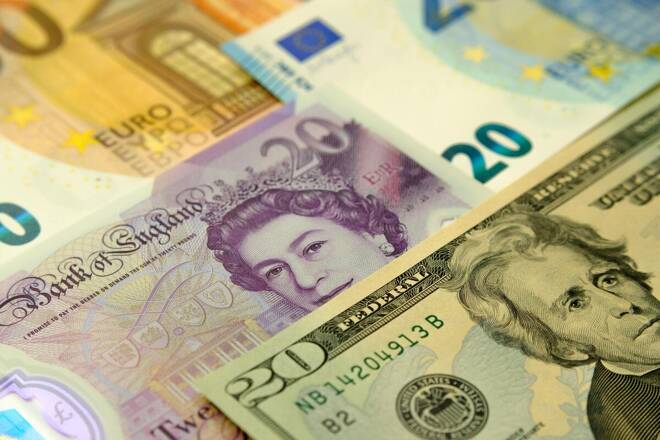Advertisement
Advertisement
GBP to USD Forecast: A Move Toward $1.26 Hinged on Fed Speakers and Jobless Claims
By:
US jobless claims and Fed speakers take center stage, impacting GBP/USD's short-term outlook.
Highlights
- The GBP/USD declined by 0.66% on Wednesday, ending the session at $1.24157.
- UK inflation and market bets on the US avoiding a hard landing left the GBP/USD in negative territory.
- On Thursday, Fed speakers and US economic data will be in focus.
The Wednesday GBP/USD Overview
On Wednesday, the GBP/USD declined by 0.66%. After a 1.79% surge on Tuesday, the GBP/USD ended the day at $1.24157. The GBP/USD rose to a high of $1.24994 before falling to a low of $1.24037.
The Bank of England in the Spotlight
UK wage growth figures may have created an air of uncertainty. However, inflation figures for October could give the Bank of England a reason to discuss rate cuts.
October inflation raised expectations of a shift in BoE views on interest rate cuts. UK core inflation eased more than anticipated.
However, contrasting views on monetary policy may leave the GBP/USD in limbo. Last week, Bank of England Governor Andrew Bailey said discussions about interest rate cuts were premature. BoE Chief Economist Huw Pill had a different view, suggesting August 2024 as appropriate for a rate cut.
Considering the recent stats, Bank of England forward guidance could be pivotal before UK retail sales numbers on Friday.
Sir Dave Ramsden is on the BoE calendar to speak on Thursday. Comments relating to the recent UK economic indicators and interest rates need monitoring.
Fed Speakers and the US Labor Market in the Spotlight
On Thursday, US jobless claims and Fed speakers will garner investor interest. An unexpected spike in US jobless claims could further cement the market bets on the Fed ending its rate hike cycle.
A weaker labor market could affect wage growth and consumer confidence. Softer wage growth could reduce disposable income. Waning consumer confidence would signal a pullback in consumer spending. The combined effect on demand-driven inflation may allow the Fed to take a last hawkish rate path.
Economists forecast initial jobless claims to increase from 217k to 220k in the week ending November 11.
While labor market numbers need consideration, Fed speakers could have more influence.
FOMC members Lisa Cook, Michael Barr, Loretta Mester, Christopher Waller, and Fed Vice Chair John Williams are on the Calendar to speak. Views on US inflation and interest rates will influence the sentiment toward Fed interest rate intentions.
Short-Term Forecast
Trends for the GBP/USD would likely hinge on BoE and Fed commentary before the Friday session. A more resilient US economy could allow the Fed to keep rates higher for longer than the BoE. However, dovish Fed commentary could signal a GBP/USD move toward $1.26.
GBP to USD Price Action
Daily Chart
The GBP/USD sat below the 200-day EMA while holding above the 50-day EMA, sending bullish near-term but bearish longer-term price signals.
A GBP/USD break above the 200-day EMA and the $1.24410 resistance level would support a move toward $1.26.
US economic data and central bank speeches will be the focal points on Thursday.
However, failure to move through the 200-day EMA would bring the 50-day EMA and sub-$1.23 into play. Hawkish Fed commentary and better-than-expected US stats could pressure the GBP/USD.
The 14-period daily RSI reading of 57.92 suggests a GBP/USD break above the $1.24410 resistance level before entering overbought territory.
4-Hourly Chart
The GBP/USD held above the 50-day and 200-day EMAs, sending bullish price signals.
A GBP/USD break above the $1.24410 resistance level would support a move toward $1.26.
However, a drop below $1.23500 would give the bears a run at the 50-day EMA and sub-$1.23000 levels.
The 14-period RSI on the 4-hour Chart at 57.03 suggests a GBP/USD move to $1.25 before entering overbought territory.
About the Author
Bob Masonauthor
With over 20 years of experience in the finance industry, Bob has been managing regional teams across Europe and Asia and focusing on analytics across both corporate and financial institutions. Currently he is covering developments relating to the financial markets, including currencies, commodities, alternative asset classes, and global equities.
Latest news and analysis
Advertisement
